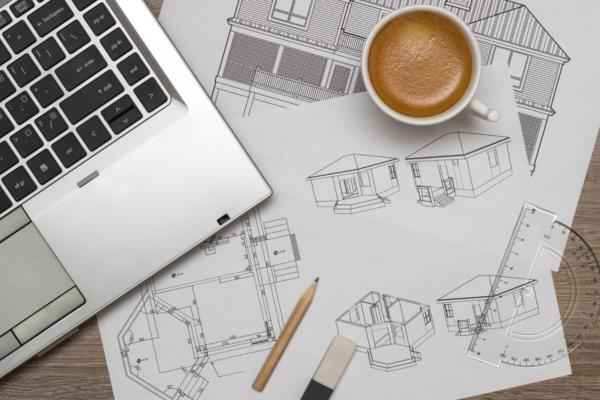.png)
How Artificial Intelligence is Revolutionizing Architectural Design
Artificial intelligence (AI) has become a powerful tool that is revolutionizing the field of architecture and construction. With the ability to perform tasks that would typically require human intelligence, such as learning, reasoning, and problem-solving, AI enables architects to create and evaluate solutions that meet the changing needs and preferences of clients, users, and society.
One way AI enhances architectural design is through image generation. Using simple text prompts, AI can generate realistic and detailed images, allowing architects to visualize and communicate their ideas effectively to stakeholders and the public. This capability helps to bring designs to life and make them more accessible to a broader audience.

Additionally, AI can optimize designs for various building-performance metrics, including energy efficiency, sustainability, comfort, safety, and accessibility. AI can provide architects with valuable feedback and suggestions to improve design outcomes by analyzing data from sensors, simulations, and models. This enhances the overall performance of buildings and helps architects make informed decisions based on data-driven insights.
Another area where AI proves beneficial is floor plan generation. AI can generate floor plans based on simple inputs such as the number of rooms, site size, building orientation, and desired functions. Furthermore, AI can dynamically reorganize floor plans as walls and partitions are moved, ensuring optimal space utilization and circulation. This ability streamlines the design process, saving time and resources.
AI also plays a significant role in urban planning, helping architects to create livable, resilient, and adaptive cities. By utilizing data from various sources such as demographics, traffic, climate, land use, and social media, AI can understand the needs and behaviors of urban dwellers. This information enables architects to generate solutions that enhance communities' quality of life and well-being.

While AI offers numerous benefits, it also poses challenges for architecture. Ethical issues, technical issues, and human issues need to be addressed. Architects must be conscious of the risks and opportunities presented by AI and adopt a responsible and ethical approach to unlock its potential for the greater good.
In conclusion, AI is transforming the field of architecture by providing new tools and methods that enhance creativity, improve efficiency, increase accuracy, and support collaboration. Architects must embrace this technology while considering the ethical implications and ensuring a responsible approach. By doing so, they can harness the full potential of AI to create innovative and sustainable designs that meet the needs of a rapidly changing world.